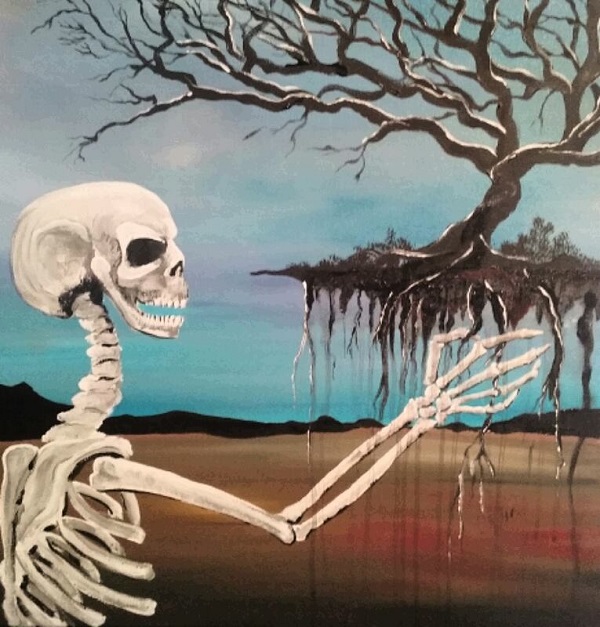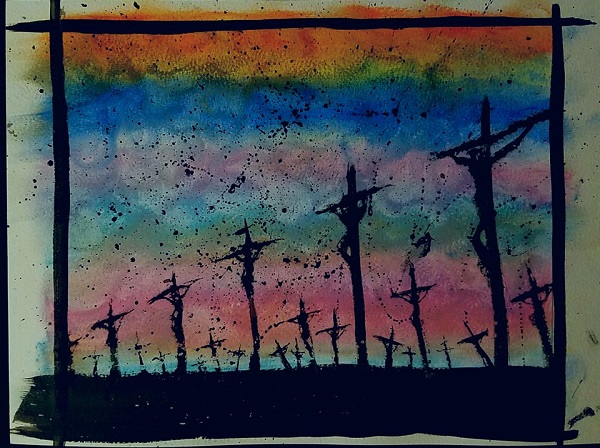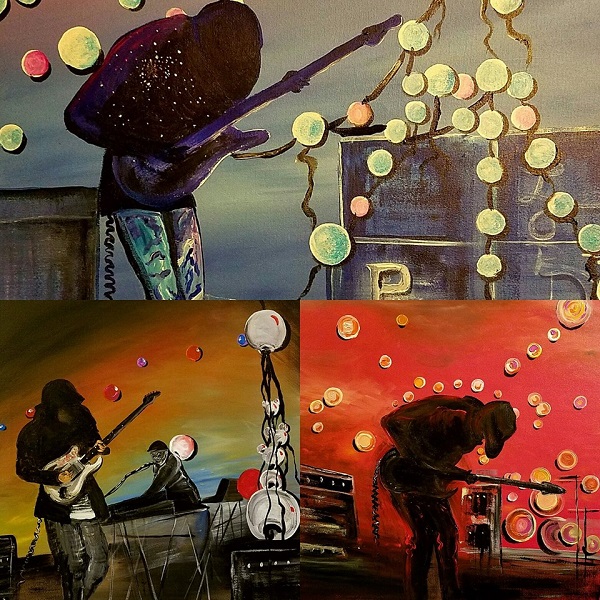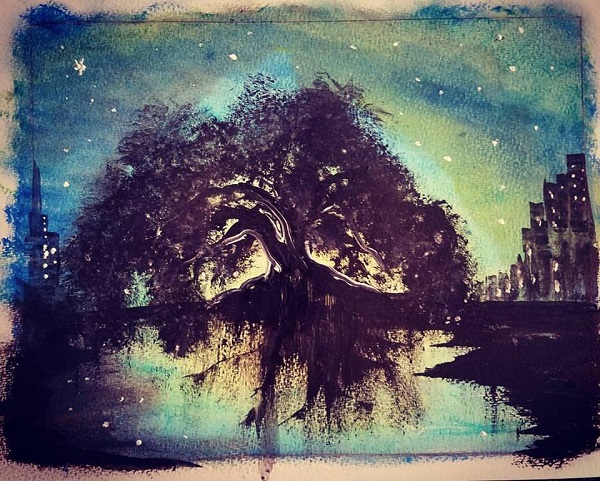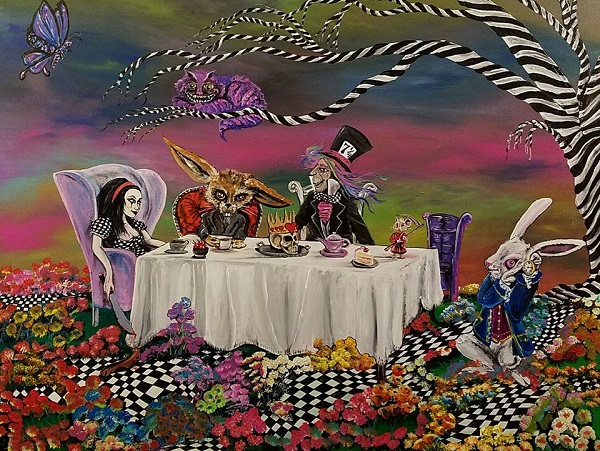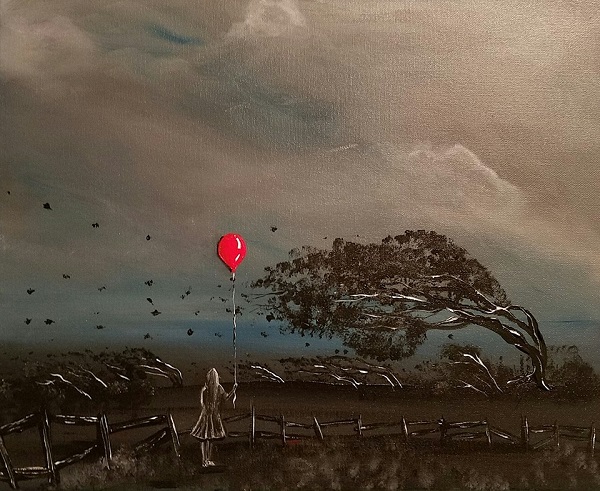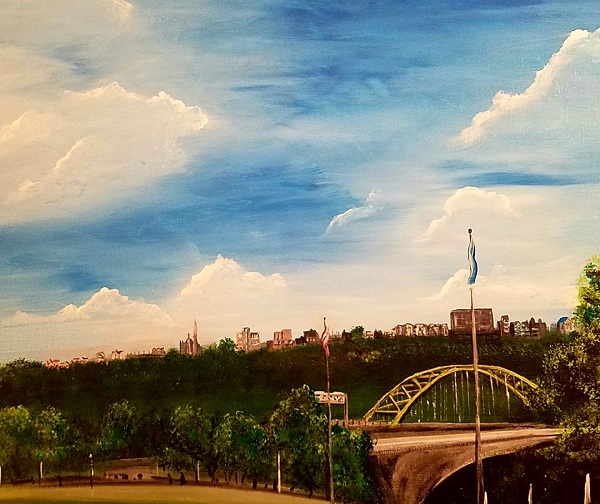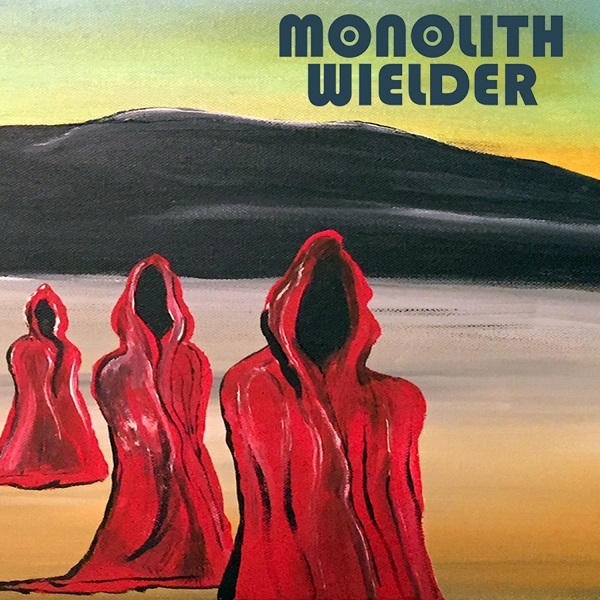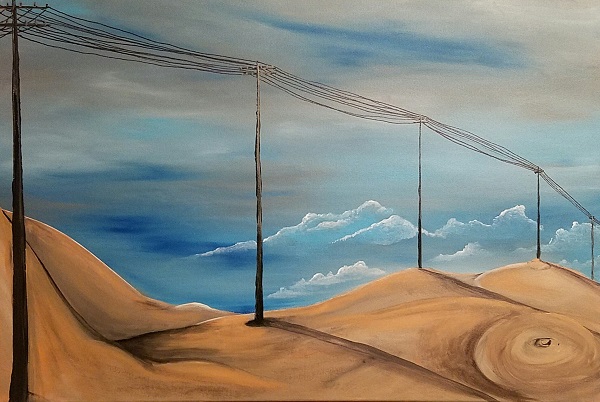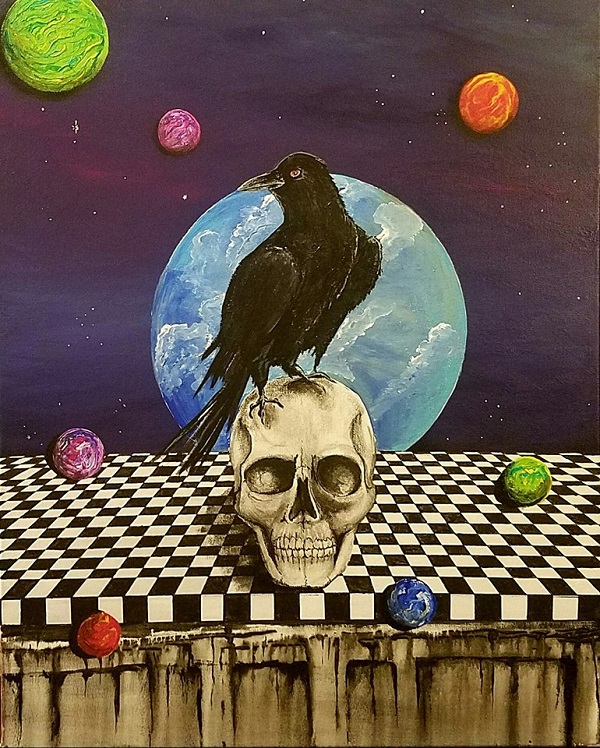When I first met Sharlene Susan Sanderson she stood in front of me and idled for about five seconds with her hand outstretched. I didn’t stop what I was doing. She told me she wanted to be called “Triple S.”
I couldn’t stand her, or her alias. She had arrived just in time to bother me. My dislike hit me in the chest like acid reflux. This wasn’t solely because she was my competition, although it might have been.
No matter how I set my mind and tried to be professional, my resentment expanded deep inside. I was appalled by her mannerisms. But she was only one new person, a minor sour element invading my supportive community of long-time friends and colleagues at the Melvin Community Market. I’d have to suffer, but only for a single day. It was our last selling time, a bookend market for the summer season. I tried to be fair-minded. I decided she wasn’t worth too much upset.
Triple S was very young and noisy, and she swore with ease. She tested the limits of my patience when she kept dancing around, trying to look precocious. I took a silent dislike to her attention-seeking behaviour. She was skidding around, showing-off and schmoozing. I wondered. Could I? Should I? Would I ever trust her?
I’m not normally suspicious, but I found her presence unsettling. She must have been at least 19 or 20, because someone would have double-checked and verified her adult status, but that was hard to believe. She wore ultra-tight Yoga pants and lots of makeup, and she carried around an Android phone as if it were glued to her palm, the earbud wires dangling until she shoved them under thick strands of unkempt hair.
She’d already slid past my kiosk three or four times, but never stopped. She’d been extra busy visiting with the other vendors, yakking with everyone – not me. Anyway, she didn’t introduce herself until she was rushing by yet again, and the timing was crucial because it was only moments before we would open to welcome our customers.
She pulled up breathlessly in front of my selling area, stuffed her cell phone and related gear into her tight front pockets. Her own tables were organized and only a short distance from my kiosk. She had laid out all her items earlier. Those tables were long and cluttered with candle holders, place mats, crystals, picture frames, belt buckles and more. Some of her merchandise was jewelry. She had pins and pendants, as well as other pieces, and that annoyed me. Upon cursory inspection, I saw that her jewelry was not quality. But, she was my competitor.
“Sharlene Susan Sanderson,” she said. “Call me ‘Triple S.’ I like to think it stands for ‘Secret Secret Secret.’” She snorted out a crazy laugh and didn’t look me eye-to-eye. “That’s my name as well. Just don’t ever call me Sharlene. No class in that, no individuality.”
I cringed. She stood there waiting for me to quit what I was doing. “Actually,” she said, “I don’t care what you decide to call me – just do.” She persisted with holding out her hand. “Most folks call me Triple S,” she said. “My friends. You know, they think it’s ultra fun. Either that or they say the Secrets – all three. Sometimes we chant out my mantra and just like this: Secret, Secret, Secret.”
I didn’t put aside the supplies that I was dealing with. I kept working, but I nodded my chin in her general direction. I’d been carefully arranging my own display of jewelry and both of my hands were occupied.
“I understand that we are the only two jewelry sellers,” Triple S said, shoving a wayward hank of hair behind her left ear. “I’m here for today. Then I’m history.”
“Is that so?” I kept on spacing out the merchandise. And then I added: “Yes, I guess you’re right. We’re the only two.”
“Are you…?” She looked at me with a catty expression. “I hear that you make your own stuff. Like, it’s homemade.”
“Hand-crafted,” I said. I straightened up and adjusted the black velveteens that I use as underlay to enhance the appearance of silver, gold and the polished inlays. “Pauline,” I said. “That’s the name that’s printed on my birth certificate. I’ve been an artisan jeweler for 27 years. My designs are unique.” (I emphasized the words “artisan” and “unique.”) “The stylings are one of a kind.” I carefully adjusted the short and long pendants on the underlay. “I work with semi-precious stones, silvers, golds and polished rocks. I’m a specialist in claw-form mountings. I produce the pieces at a jeweler’s studio on Pedder Avenue, which I rent from another craftsperson.”
“I’ve heard that the market always gets a fantastic bunch of tourists,” Triple S said. “Like, from the cruise ships. Gobs and gobs of Americans. Yeah? That means sweet-ass American bucks.”
“There’s a lot of regulars,” I told her. “Most of them are locals from the downtown.” I almost added that our total sales had been down this year considering that foot traffic had been reduced, and that there were other financial complexities and economic pressures. Alternate activities vied for tourist attention.
“Well – I hope you break a leg today,” she said. And Triple S, aka Secret Secret Secret, smirked without any hint of sincerity. She was hauling out her phone again.
The way she presented herself to me was too off-hand. The way she spoke to me I found irritating. But many young people are just this way. I rationalized and tried to let my annoyance slide. “You don’t have to wish me good luck by saying break a leg,” I told her, somewhat irked in spite of my intention. “The customers prefer my designs. They know my jewelry is first-class. And I dare to say that my pendants are truly beautiful and the stylings are always in demand.”
“I should get back and check on my own crap before we start selling,” Triple S said. “Break an arm then…or a wrist…a big toe? Try not to break a hip.” And she snorted at her own derisive humor. Her smile dismayed me. She spun around with a flamenco dancer’s move, but she had no skirts to flourish. Only those tight-ass pants.
I continued setting out my inventory. “Likewise,” I said as she retreated. I sorted out the silvers from the golds and untangled a couple of the longer pendant pieces.
I’m not exactly sure why I detested Secret Secret Secret. She wasn’t deceitful or outwardly obnoxious. She was probably like many other young people whom I’ve encountered during my 62 years. I guess I was like an old wrinkled prune to her younger point of view. She acted as a lot of girls might at around the age of 15. At that magic time female adolescents could be totally insufferable. Triple S was just one case. But she wasn’t just 15.
The morning advanced. We began to settle in with a warm fluidity as the tepid sunshine broke through the low-slung haze. Potential customers gathered and then the market began to swing.
A few people milled about checking on the goods. The other merchandise included a conglomerate of preserves and baking and fresh produce. All sales would be final because it was the last opening and we didn’t set it up for the fall or winter.
We were located at the mini-park where Melvin Street meets Brandolin. Occasionally, a local musical trio joined the day, offering a set of background tunes, a folk-rock or a jazzy mixture. But there wasn’t music on the scene for our final performances. Nevertheless, we presented a cool atmosphere. No pesticides, no fears. Most of the farm-fresh vendors boasted organics. The other sellers shared concerns about the protection of the environment and the naturalness of their products. Merchandise for sale included knitted crafts, small woodworking pieces and organic dog treats.
I thought that Triple S was an empty shell, too loud, far too crazy. I could hear her joking around and flirting with the guys. I did not trust her as far as I could pitch a feather.
She presumed her welcome. I could tell she enjoyed attention. The others were friendly, as they always are. They’re a tolerant society. But, this is my community, my soul, my haven. The regular sellers generally support and organize diverse endeavours. I’ve always felt a fuzzy warmth every time I’m there and I belong.
Many of the other sellers had presented Triple S with their own free samples, like jam, tea and homemade soap. I wondered why a newcomer actually deserved so many perks and freebies. Especially just for showing up, and only once. Most of us worked conscientiously each weekend and helped the market to succeed through consistent effort. At least, we showed up every weekend or we paid our dues.
September had seen our busiest sales, but still not great. I really needed to make a showing. My dentist bill was huge, my taxes overdue. I needed extra money so badly now that I was sweating through my socks. I might be otherwise unemployed, and fairly soon. That reality depended on the clinic where I worked daytime shifts as a medical receptionist. Rumors abounded – ones that said the clinic might actually close completely and go under with no retirement funds forthcoming.
Triple S’s jewelry included silver-toned pieces similar in appearances to mine, but they were cheap. The stones were fake, the settings were plastic and fixed together by adhesives.
I do admit that Triple S might have been considered attractive considering the blessings of her youth. The guys clued in and crowded her. Other customers too. They seemed to find her charming. She had an edgy veneer as well as an aura of optimism. Except she annoyed me further with her arrogant laugh, which sailed across to me, bringing the tonality of a whooping bird. First, there was a big snort, and then she cackled.
That morning, nothing was working for me. Peter Compton’s farm-fresh produce separated Triple S’s area from mine. We had only a few wooden racks of cucumbers, kale and tomatoes as a buffer. I peered at my competition by stepping around the vegetables. She was in the midst of great success, robbing me. I started to percolate a case of jealousy. She had awesome luck and the confidence of the uninhibited. “Not fair!” I muttered, sending resentful complaint to the Great Creator. I had none of her customers. Folks were crowded at her tables. None at mine.
It was evident that she could talk to strangers without any hesitation. I overheard the banter. Even the hot-dog seller, an old Croatian guy who rarely speaks. He sauntered right over and joked with her. He offered her a free bratwurst on a wholegrain bun. My stomach rumbled.
I decided that Triple S was not worth a skeptical second look. Except I couldn’t help staring when she wasn’t aware that I was staring. I do not like such raw envy inside my heart. It gives me a spiteful feeling. And I fretted.
Why did she have to invade my turf? This was supposed to be my holy space, my ad-hoc community, my support and a wonderful market place. They’re like my non-blood related family, but I require so much.
I was not feeling well. I thought about shutting down and going home to obliterate myself with beer and cookies. First, I would buy a lottery ticket, a hoped-for and unrealistic miracle. When I had not sold a single piece of jewellery for two hours, I elected full retreat.
The Market danced around me like a frenetic, too-bright circus. I began feeling dizzy. The produce stalls seemed extra rickety. The jars of preserves appeared to be floating in mid air. Triple S had her pendants dangling from a rod. Her customers could push each pendant aside and then examine the next. No need of an underlay or any thoughtful layout pattern or design.
Apparently she could sell anything – tulips to the Netherlands, fish to the sea, helium balloons to a rabbit.
I starting feeling faint before I realized I should eat. I’d fallen into a state of green-eyed nausea, wholly depressed. I continued closing down my kiosk. I needed a long nap and a huge bottle of the strongest headache medicine.
It took about 20 minutes to dismantle and stow the jewelry and the underlay inside the carry-all. I snagged it tight with twine. With this awkward bundle swagging from my shoulders, I wandered around, checking out the goods. The tea blends might be helpful. Many were concoctions of herbal remedies.
Across from the organic dog treats, a woman named Nita was selling whole-wheat and soy products. I purchased a half dozen sweet and sticky buns, remembering that I’d skipped my breakfast toast. On a broad bench at the side and over at the periphery, I sat down. The perch was far enough away from the action. I ate three and a half buns. Then one more.
And very quickly the world began to shake. My eyesight tricked me. Clouds came and danced like cotton animals. I began to cough. My airways constricted. I couldn’t cough hard or long enough to clear my throat. I hacked. I couldn’t suck in breath. The world was cold. Couldn’t focus. Blackness came and swallowed me…
___
Who am I? Where am I going? Trying to understand. Trying…
I felt myself resurfacing, fighting against a murkiness, up from the deep-end pool and through a stew of black squid ink. I regained myself. My mind was coming up for light. My head felt kind of floaty and my thoughts were thick.
___
“Ah hum. So, welcome back to earth.”
“Huh. What?”
A voice.
I brought into focus a fine-boned, angular and well-tanned face. A masculine vision bent over me. His nose was close, his amber eyes concerned. His breath was sweet. “Don’t move too suddenly,” the vision said to me. “Try not to jerk the IV line. Lie back now, relax.”
“Where am I?”
“You’re in the back of an ambulance on your way to City Hospital.”
“Really? What?”
“You’re fine. You’re going to be a hundred-percent fine. You’ve only been unconscious for a few seconds.”
“Why? What happened? Who are you?”
“I’m Ravinder. Your EMT, the ambulance technician. That’s where you are. You’re in the back of an ambulance. But no worries. You’re not in trouble. You’ve had a severe anaphylactic reaction. You ate some pastries, had an extreme allergic reaction.”
“I’ve had what?”
“You passed out.”
“I did?”
“You bet.”
“Stopped breathing?”
“Well, you almost did. We arrived and got you fixed. Just in time. Lucky for you, one of the other folks who was working at the market quickly noticed you. She saw that you were in severe distress and jabbed you with an EpiPen. That rushed the antidote straight into your system. Like I said, you’re going to be one hundred percent just fine. Try not to worry.”
“It was? What? I mean…. I might have, uh…. You mean I could have died?”
“Well, it was a fairly severe allergic reaction.”
“Those buns….”
“Yes, perhaps it was the buns, or another antigen. It doesn’t really matter now that you’ve revived. Maybe a specialist will be able to pinpoint and identify what substance. Incidentally, we’ll be arriving at the hospital in just a few minutes. Remember, if you can – it was all thanks to the quick action of a woman who was totally prepared. She had a brand new EpiPen. You’re going to be okay.”
“Who was that? Do you know who it was?”
“Let me see…I have her name noted somewhere here on the data entry. It was the same woman who called in 911 on her cell. She really kept her wits during the emergency.” The ambulance attendant scrolled through his computer information using a handheld device. “Ah hum, got it. Here it is,” Ravinder said. “The woman’s name is Sharlene Susan Sanderson.”
“Oh…”
“And, she’s been very thoughtful. See, she’s made sure you have your bundle of personal stuff with you. Look here, beside you. There.” He indicated my carry-all of jewelry, which was squashed against the stretcher. “That young woman… Well, she must be a very good friend of yours,” Ravinder said. “You’re lucky she was present, and she was immediately on the scene with the counteracting dose of epinephrine.”
“She’s a gem.” I told him. I let my aching head fall back down onto a low pillow, and I closed my eyes for a minute. Maybe a minute and half, maybe two, perhaps longer.
I was determined to let the universe take charge, and I floated with it. I would not think. I did not have to move or change position. I did not have to jump about or try too hard at anything. I existed.
And this guy – Ravinder – soothing and compassionate – offered comfort to me. I was going to be okay, and I owed my life to a young woman who called herself Triple S.
Should have known.
I kept my eyes sealed and inhaled thirsty gulps of oxygen, allowing humble thanks to rule my brain. I did not fully comprehend all my deep-set feelings, nor did I acknowledge any worries that continued from within. I became aware of the sound of my own heart. The quality of the heartbeat had an altered cadence and a brand-new amplitude. It seemed to whisper softly: “Secret Secret Secret…”

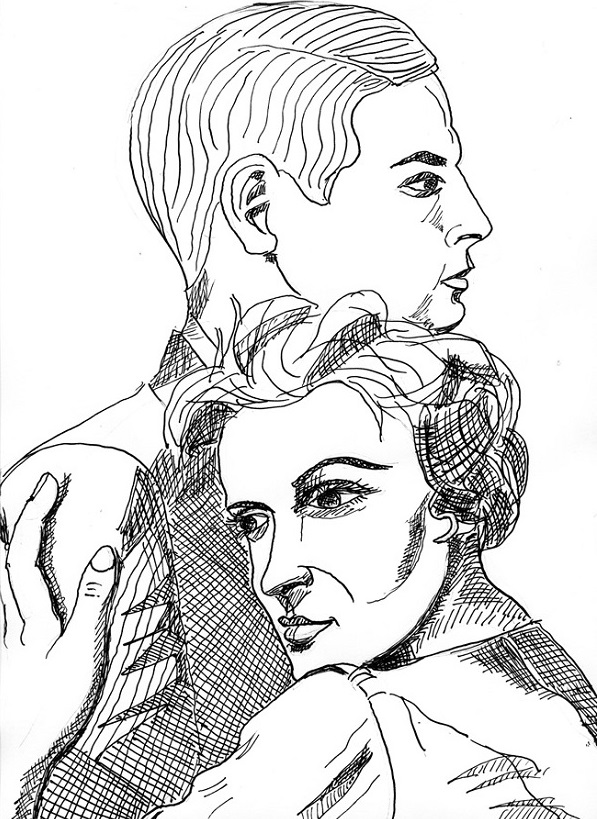
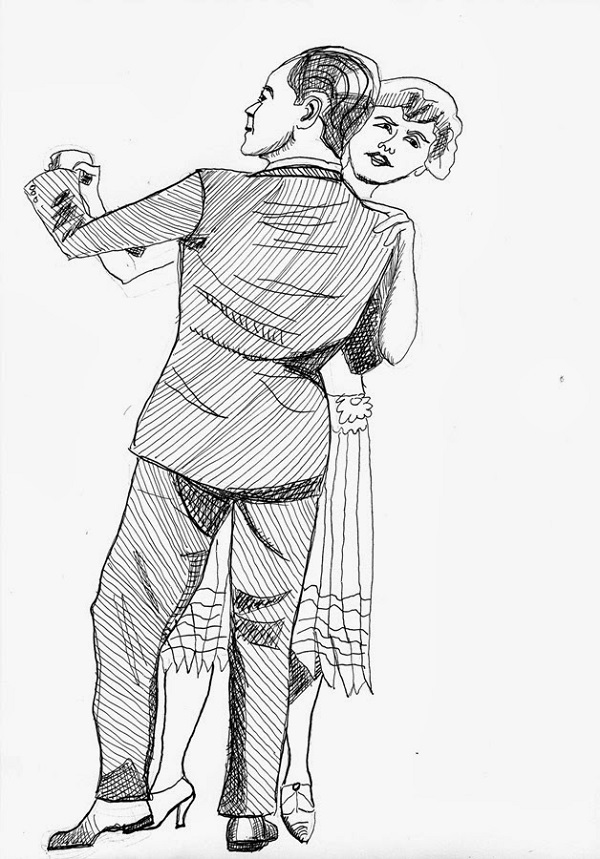
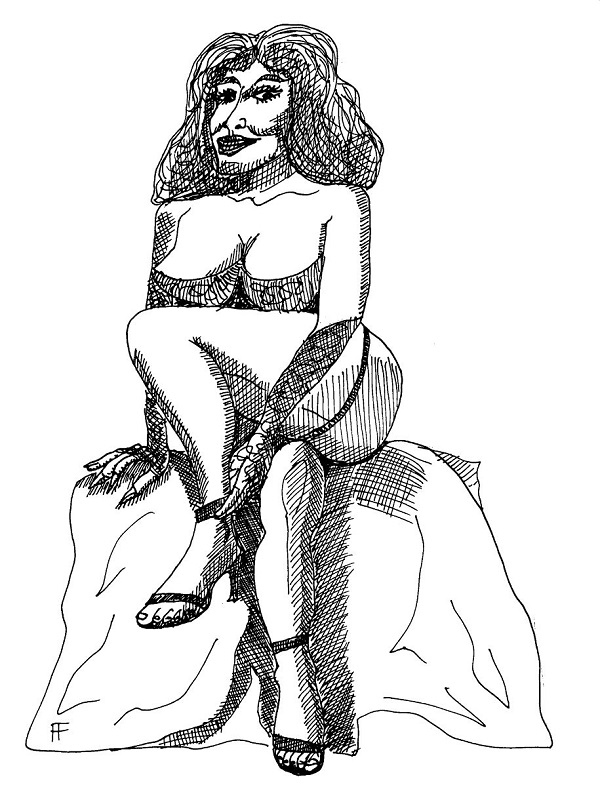
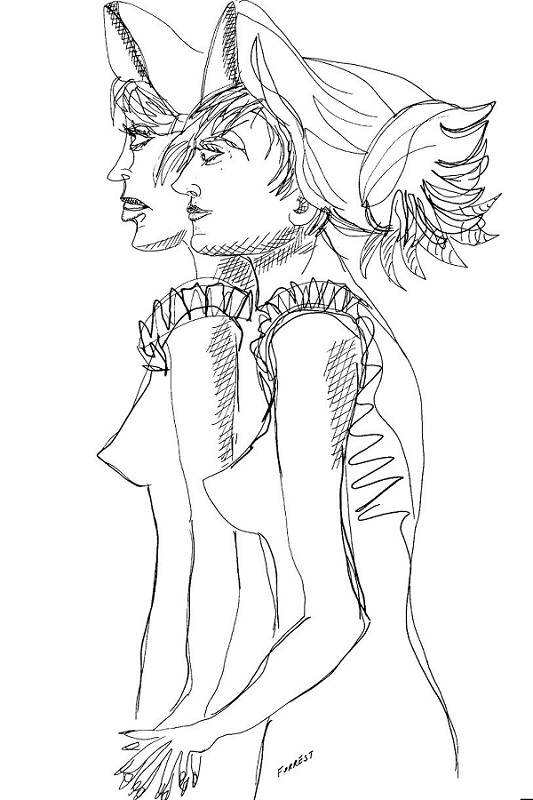
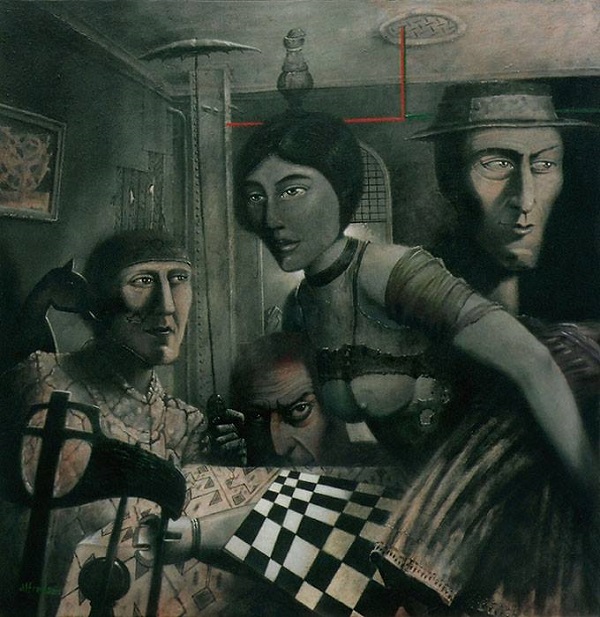 Players of Strange, Meaningless Games
Players of Strange, Meaningless Games One-Eyed Angel of Your Rising Moon
One-Eyed Angel of Your Rising Moon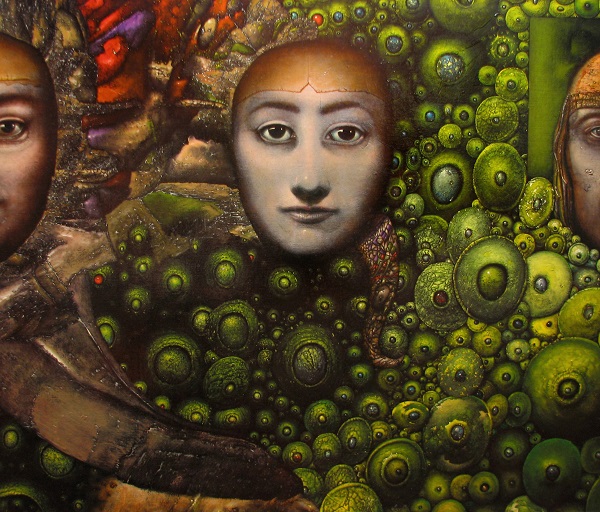 The Dream Ambassadors
The Dream Ambassadors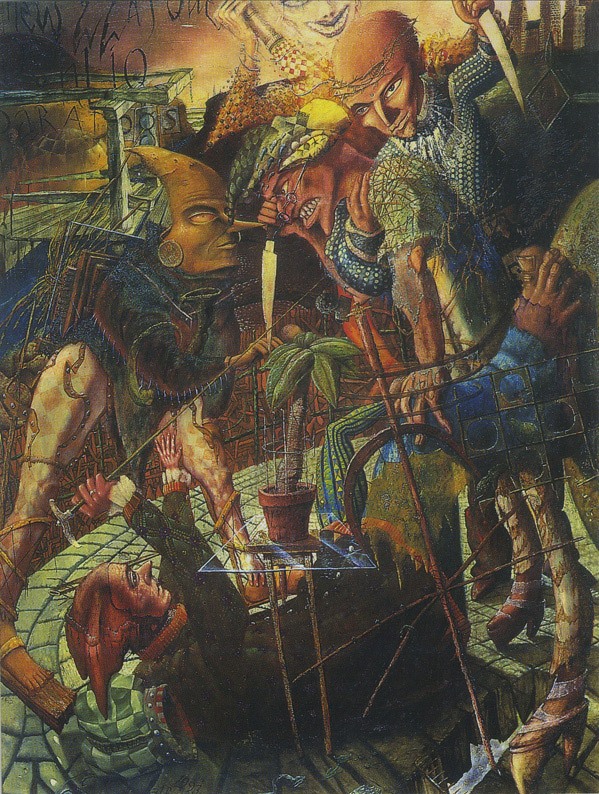 Palm Lovers Arranged by the Sky
Palm Lovers Arranged by the Sky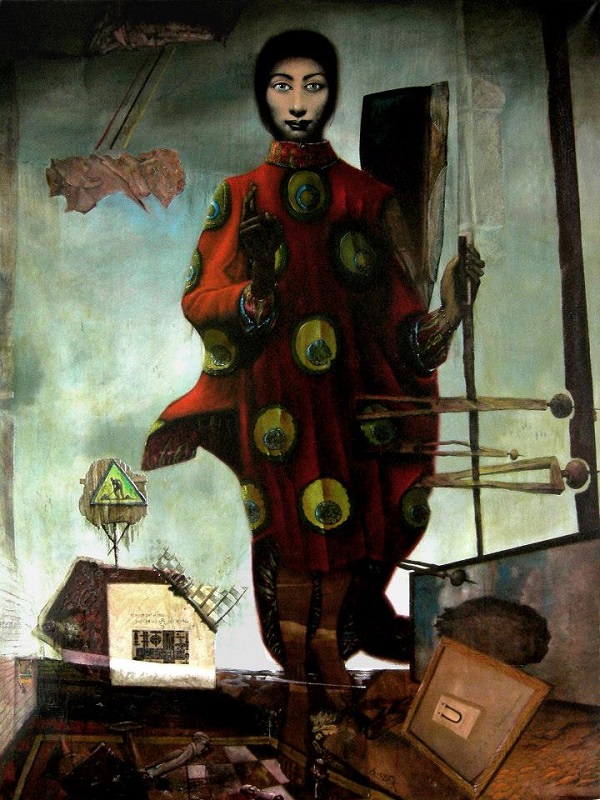 Stebuklingas Drugelis
Stebuklingas Drugelis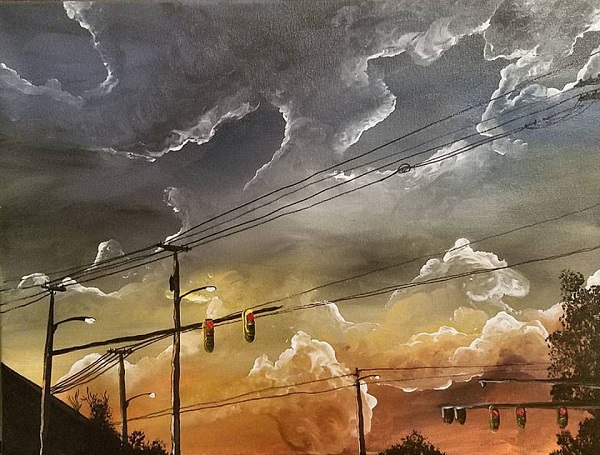
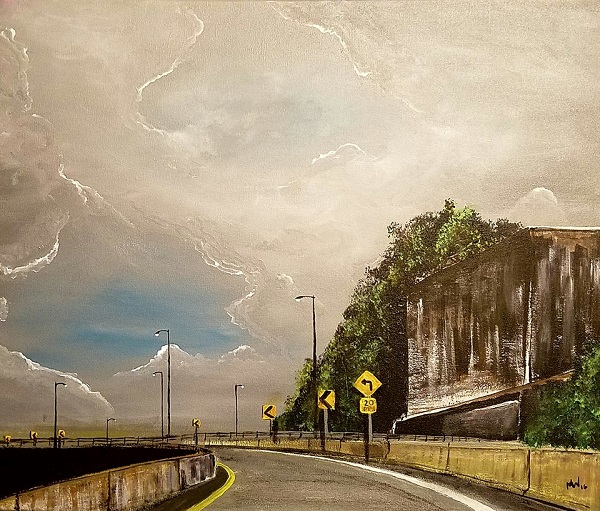 Pittsburgh Traffic Purgatory Series: Fort Pitt Bridge on ramp at West Carson
Pittsburgh Traffic Purgatory Series: Fort Pitt Bridge on ramp at West Carson